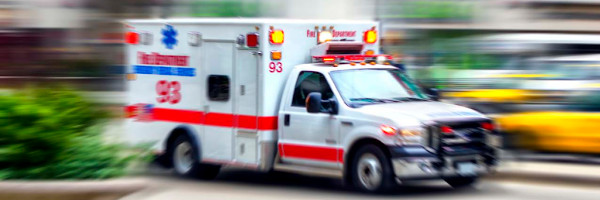Information for First Responders on Maintaining Operational Capabilities During a Pandemic: Difference between revisions
No edit summary |
No edit summary |
||
| (3 intermediate revisions by the same user not shown) | |||
| Line 1: | Line 1: | ||
{{COVID-19 | {{COVID-19 | ||
| title = Information for First Responders on Maintaining Operational Capabilities During a Pandemic | | title = Information for First Responders on Maintaining Operational Capabilities During a Pandemic | ||
| team = | | team = Federal Emergency Management Agency, Cybersecurity and Privacy | ||
| leader = Scott Tousley | | leader = Scott Tousley | ||
| image = First_responder.jpg | | image = First_responder.jpg | ||
| imagecaption = First Responder Pandemic Operational Capabilities | | imagecaption = First Responder Pandemic Operational Capabilities | ||
| chapter = City Resilience | | chapter = City Resilience | ||
| municipalities = | | municipalities = Washington DC | ||
| contributors = | | contributors = Scott Tousley | ||
| status = | | status = | ||
| website = | | website = | ||
| download = | | download = first_responder_pandemic_operational_capabilities.pdf | ||
| description = | | description = | ||
First responders have a critical role in | First responders have a critical role in pre-hospital emergency care and must continue to provide this essential service and fill the many emergency response roles in a community. | ||
Fire, emergency medical services (EMS), law enforcement, emergency management and 911 telecommunications. | }} | ||
The first responder community includes: Fire, emergency medical services (EMS), law enforcement, emergency management and 911 telecommunications. | |||
During a severe pandemic, workloads will increase, and staff sizes will diminish as employees and their families become ill or are quarantined. Contingency planning can help reduce the worst impacts; smart planning can save lives. To help with planning for the impacts of a severe pandemic, this document provides the following kinds of information for first responders: ĵ Potential ways to adjust operations to maintain readiness and response. Potential ways for leaders in the first responder community to plan at the local level; including a planning tool for these efforts. Present out-of-the-box planning and operations concepts to drive thought and discussion. Reference sheets with discipline-specific potential action steps. | During a severe pandemic, workloads will increase, and staff sizes will diminish as employees and their families become ill or are quarantined. Contingency planning can help reduce the worst impacts; smart planning can save lives. To help with planning for the impacts of a severe pandemic, this document provides the following kinds of information for first responders: ĵ Potential ways to adjust operations to maintain readiness and response. Potential ways for leaders in the first responder community to plan at the local level; including a planning tool for these efforts. Present out-of-the-box planning and operations concepts to drive thought and discussion. Reference sheets with discipline-specific potential action steps. | ||
Latest revision as of 00:50, January 25, 2023
| Information for First Responders on Maintaining Operational Capabilities During a Pandemic | |
|---|---|

| |
 First Responder Pandemic Operational Capabilities | |
| Team Organizations | Federal Emergency Management Agency Cybersecurity and Privacy |
| Team Leaders | Scott Tousley |
| City, State | Washington DC |
| Contributors | Scott Tousley |
| Website | |
| Document | Download |
Description
First responders have a critical role in pre-hospital emergency care and must continue to provide this essential service and fill the many emergency response roles in a community. The first responder community includes: Fire, emergency medical services (EMS), law enforcement, emergency management and 911 telecommunications.
During a severe pandemic, workloads will increase, and staff sizes will diminish as employees and their families become ill or are quarantined. Contingency planning can help reduce the worst impacts; smart planning can save lives. To help with planning for the impacts of a severe pandemic, this document provides the following kinds of information for first responders: ĵ Potential ways to adjust operations to maintain readiness and response. Potential ways for leaders in the first responder community to plan at the local level; including a planning tool for these efforts. Present out-of-the-box planning and operations concepts to drive thought and discussion. Reference sheets with discipline-specific potential action steps.